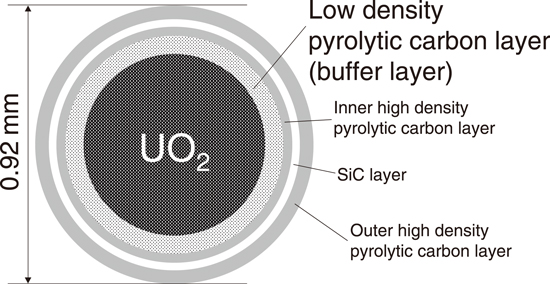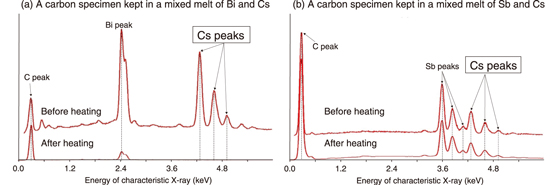
Fig.6-5 Schematics of the cross section of a coated fuel particle (CFP) of the High Temperature Engineering Test Reactor (HTTR), which is the only high temperature gas-cooled reactor (HTGR) in Japan

Fig.6-6 Energy dispersion X-ray (EDX) spectra obtained from specimens before and after heating up to 1500 ℃
(upper: before heating, lower: after heating)
The minimum unit of the high temperature gas-cooled reactor (HTGR) fuel is a coated fuel particle (CFP) with a diameter of approximately 1 mm. In Japan, CFPs are formed by covering a small sphere of UO2 (the UO2 kernel) with quadruple ceramic coating layers (Fig.6-5). Fissile materials and fission products (FPs) are retained in each CFP. However, a calculation has showed that 0.34% of cesium can be diffusively released from intact CFPs within the lifetime* of the HTGR fuel under normal operation. If the released amount of Cs is reduced, the construction cost can be reduced because the thickness of the shielding wall can be reduced. There are two methods to reduce the amount of Cs released from intact CFPs. One solution is to use a thicker coating layer of the CFP, and the other is to add a Cs trap material to the CFPs. This study is a feasibility study for the second approach.
Based on document search, it was predicted that pnictogens may be suitable as Cs trap material because they can easily be absorbed along with Cs by carbon and they can chemically bond with Cs. Therefore, the basic policy was decided as dispersing a pnictogen in the buffer layer to reduce the amount of Cs released.
Then, an experimental feasibility study was conducted. Specifically, the possibility that Sb or Bi, which are harmless pnictogens, can trap Cs in the buffer layer was examined. Carbon plates, which simulated the buffer layer, were kept in a mixed melt of Cs and Sb (Cs–Sb) or Cs and Bi (Cs–Bi) at 590 ℃ for 1 h. The weights of Cs and (Sb or Bi) were identical in each molten mixture. The C plates were removed taken from the mixture and heated in Ar up to 1500 ℃. The heating ratio was 10 ℃/min. Note that 1500 ℃ is slightly higher than the maximum fuel temperature under normal operation. Energy dispersion X-ray (EDX) spectra were obtained before and after heating. The EDX spectra revealed that after heating, the Cs atoms almost disappeared in the Cs–Bi C specimen (Fig.6-6(a)), whereas Cs atoms remained in the Cs–Sb C specimen (Fig.6-6(b)). In addition, it was revealed that Cs atoms almost disappeared in the C specimen kept in the molten Cs.
The conclusion is that Bi cannot trap Cs in the buffer layer, but Sb can. The next step will be to conduct heating tests for longer times with the Cs–Sb C specimen.
This study is a part of the results of the cooperative research with the University of Fukui.
(Jun Aihara)
* Sawa, K. et al., Prediction of Nongaseous Fission Products Behavior in the Primary Cooling System of High Temperature Gas-Cooled Reactor, Journal of Nuclear Science and Technology, vol.31, issue 7, 1994, p.654-661.